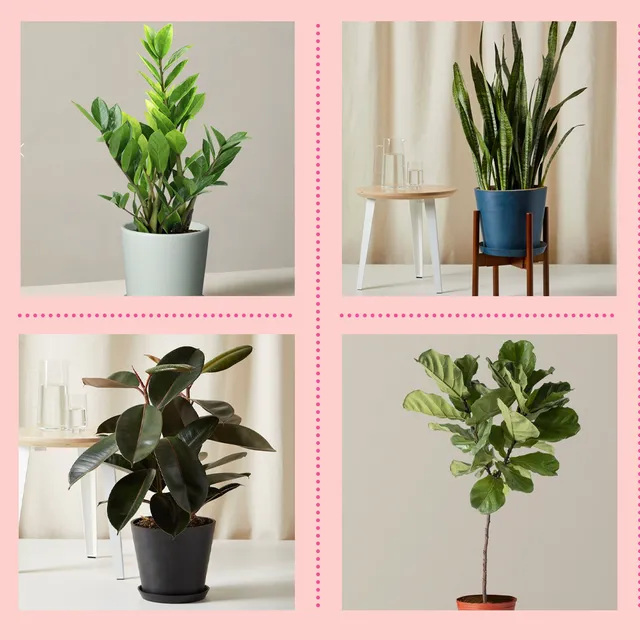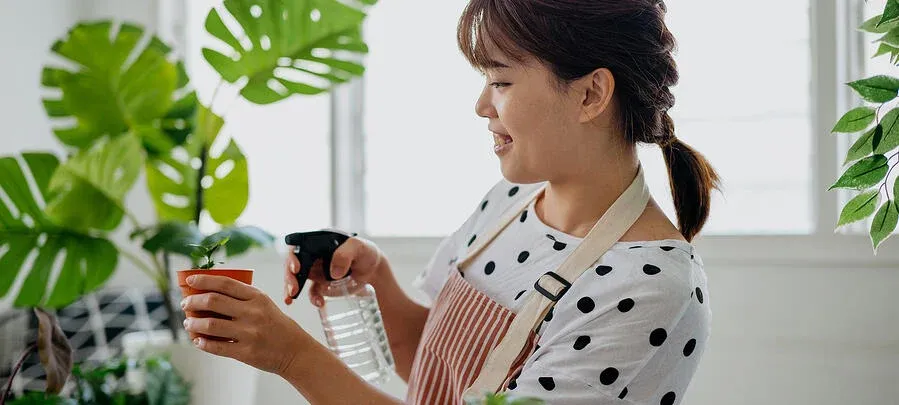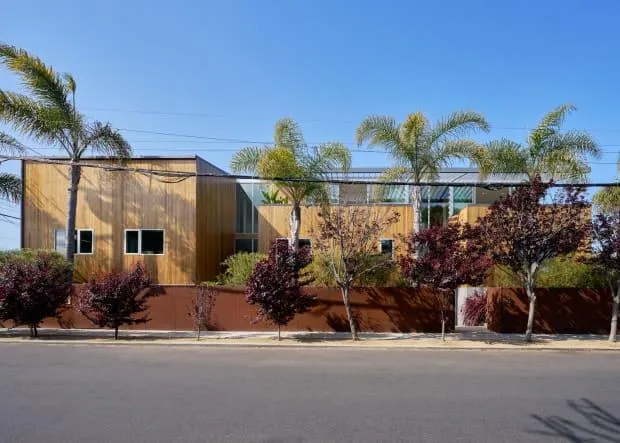All You Need to Know About Growing Indoor Trees and Houseplants
If you typed “house trees indoor” into your search bar, you’re probably wondering how you can bring the outdoors in and add some greenery to your home. Well, fear not – growing indoor trees and plants is totally doable, even if you don’t have a green thumb. In this guide, I’ll cover all the basics of caring for houseplants and small indoor trees so you can transform your space into an urban oasis.
Choosing the Right Plants
The first step is selecting species that will thrive in your indoor conditions. From my experience, low-light tolerant plants like pothos, snake plant, and Chinese evergreen are very forgiving choices for beginners. Peace lilies and spider plants are also good air-purifying options. If you want something with a bit more height, dwarf date palms or fig trees could work. Just be sure to position them near a bright window.
You’ll also want to consider how much maintenance each plant requires. Something like a fiddle leaf fig demands moreTLC than a low-water succulent. Do some research so there are no nasty surprises down the line. Plant caring difficulty levels vary, so pick ones aligned with your schedule and skill set.
Assessing Light Conditions
Light is crucial for healthy indoor plants. Use a light meter app or observe where the sun hits during different times of day to gauge your space’s lighting. Then choose accordingly – like I said, pothos and snake plants can tolerate low light, while a schefflera or parlour palm would be happier in a brighter spot. You may need to supplement with grow lights if surfaces don’t get much natural illumination.
Figuring Out Watering Needs
Under- or overwatering are frequent causes of plant demise. The general rule is to let soil dry out between waterings, but this can vary greatly per species. Succulents like aloe only need water every few weeks, whereas peace lilies or roses drink more regularly. Feel the soil before watering and only give enough to moisten the root zone. Drainage holes in the container bottom are essential for preventing root rot too.

Determining Your Care Routine
Establish a monthly schedule for tasks like pruning, staking, removing dead foliage and reporting if needed. Catch early issues before they worsen. Signs such as yellowing leaves could mean too much or too little water or light. Pests are common too – keep an eye out for webs or bugs and address promptly with natural remedies. Regular routine care and monitoring will help your plants thrive for years to come.
Creating the Right Environment
Proper temperature, humidity, and airflow are also vital. Most houseplants prefer temps between 60-80°F. If it’s very hot or cold by windows, consider relocating plants. You can boost humidity with pebble trays or a humidifier. Provide adequate ventilation to discourage molds. Clean leaf surfaces regularly to remove dust. With these indoor environmental factors in check, your greenery will flower and grow lushly.
Safety Considerations
Of course, safety comes first – especially if you have pets or young kids. Certain plants like peace lilies or philodendron can pose health risks if ingested. Keep them out of reach or choose non-toxic alternatives like succulents or ferns. Also assess any potential allergies before introducing new flora indoors. Taking precautions will help you enjoy your plants responsibly for many years.
Getting the Most from Your Plants
Once they’re established, you can really start benefiting from your indoor jungle. Science shows plants indoors purify air by removing toxins and increasing oxygen levels. Their presence has emotional perks too – studies find greenery reduces stress and lifts moods. Decoratively arranging your flora collection can improve indoor ambience as well. Then of course, there’s the simple pleasure of nurturing living things and admiring their growth. Your home may feel calmer and fresher with a touch of the great outdoors brought inside.
Tips for Special Situation
Growing houseplants presents unique challenges for some situations. If you have pets, cat-safe plants like snake plants or dracaenas are your best bet. Renters may need solutions that avoid holes in walls for hanging planters. Consider tabletop gardens or freestanding stands instead. And those with limited mobility may prefer low-maintenance succulents or pothos that don’t need repotting often. With some adjustments, almost anyone can reap the benefits of indoor plants.

Common Problems and Solutions
Even with TLC, issues may still arise. Yellowing leaves, brown spots or wilting could indicate over- or underwatering, as mentioned before. Check the soil and adjust watering habits accordingly. Pests like spider mites or mealybugs may attack – treat promptly with neem oil or insecticidal soap. Brown tips could mean hard water, fluoride or minerals in your H2O – try distilled for finicky plants. And leggy growth often means not enough light -rotate or supplement. With some know-how under your belt, you’ll be able to diagnose and remedy any plant problems that come up.
Bringing the Outdoors In
By now, you basically have a PhD in plant parenthood! You’re fully equipped to start growing your own miniature indoor jungle. Feel free to get creative – try different plant pairings or display styles. Throw in potted herbs for the kitchen too. Over time, nurturing houseplants can become a fulfilling hobby that reminds us of nature’s beauty even in urban areas. Happy planting – I hope these tips help you bring life, color and tranquility inside all year round. Let me know if you have any other plant questions!
Choosing an Indoor Houseplant: Factors to Consider
| Plant Type | Light Needs | Water Needs | Soil Needs | Easy Care? |
|---|---|---|---|---|
| Snake plant | Low | Let dry slightly between waterings | Well-draining | Yes |
| Pothos | Low to medium | Let dry slightly before watering | Well-draining | Yes |
| ZZ plant | Low | Let dry out between waterings | Well-draining | Yes |
| Peace lily | Medium | Keep soil moist | Well-draining | Yes |
| Spider plant | Medium | Let dry slightly between waterings | Well-draining | Yes |
FAQ
-
Can trees grow indoors?
Absolutely, while it may be more challenging than outdoors, many trees can live happily inside. The key is finding the right type of tree and providing the proper care.
-
What kinds of trees work well indoors?
Some trees that basically tolerate indoor conditions include: succulents like jade and aloe, pothos, snake plant, elephant ears, bamboo palm and peace lilies. These sorts of plants need less sunlight and are more forgiving of the dry indoor air.

-
How much light do indoor trees need?
Most indoor trees require medium to bright, indirect sunlight for at least 6 hours daily. It’s important to position them near an east or west facing window to avoid harsh direct rays. On the other hand, too little light will lead to leggy, none growth.
-
What size pot is suitable?
Generally, the pot should be only slightly larger than the root ball. Going up one or two inches is sufficient. A too-small pot may constrain growth, while too much room allows for overwatering issues. you want to kind of find that happy medium.
-
How often should you water?
Water requirements vary significantly depending on the tree type and growing conditions. As a rule of thumb, allow the topsoil to dry out slightly between waterings. Stick your finger in the soil to test its moisture level – if it’s dry about 1/2 inch down, it’s time to water. Perhaps err on the side of underwatering versus overdoing it.
-
What about humidity levels?
Most indoor trees originate from tropical or subtropical environments and prefer average household humidity levels of 40%-60%. For very dry indoor areas, setting the plant on a pebble tray with water can assist with humidity. Cool mist humidifiers are another option for increasing local humidity, if needed. You could also group plants together for a sort of natural humidifying effect.
-
How do you know if a tree is getting enough care?
You need to pay attention to clues like the overall appearance and new growth. Is the plant healthy looking with lush dark green leaves? Or pale and sparsely leaved? Thriving trees produce steady new growth, while a stressedplant may drop leaves or stagnate. Taking the time to notice and address issues puts the tree’s needs first.

Trees can really brighten up a home and purify the air, so growing them indoors expands your gardening possibilities tremendously. By following the basic guidelines, you’ll find the right tree match that hopefully thrives for years inside your home. It takes a bit of effort, but the rewards of homegrown greenery are awesome. With trial and error you’ll get better at reading your tree’s needs too. Now get out there and pick your new leafy indoor companion!
